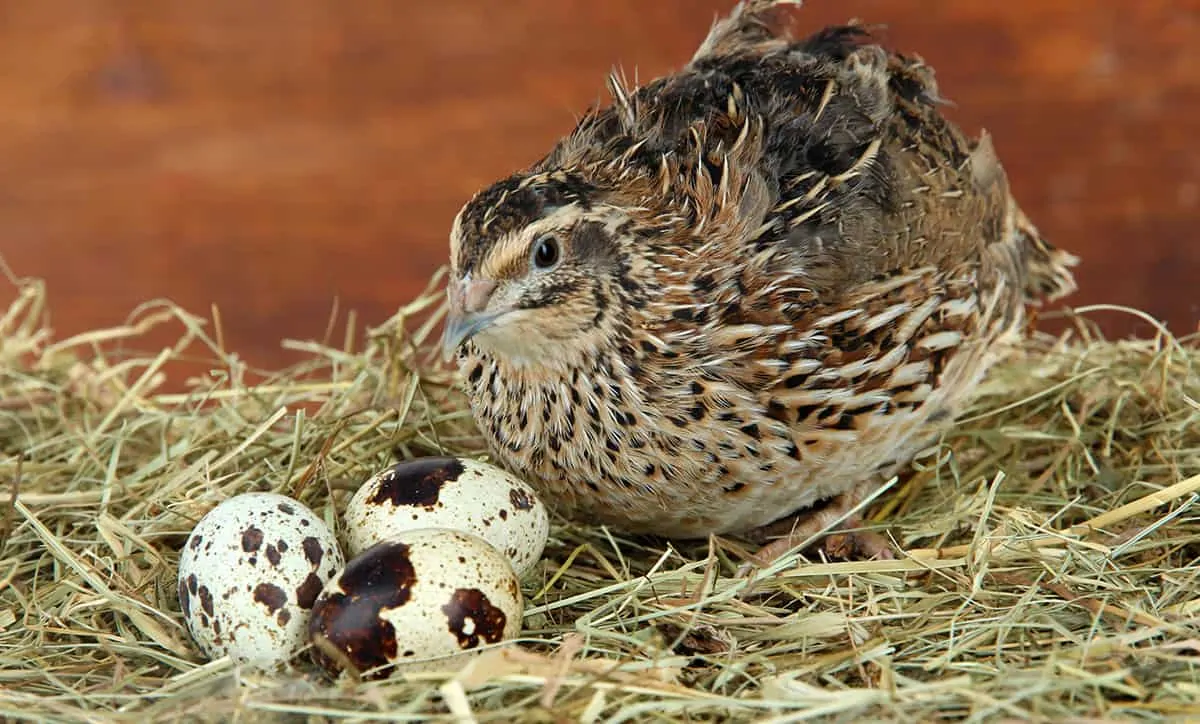For centuries, people have chosen to raise chickens for both eggs and meat. More recently, people are becoming interested in raising quail for the same purpose. Quail provide both meat and eggs for people; however, there are differences in raising quail you should be aware of.
Quail are less expensive to purchase, raise, and maintain than chickens. Quail are popular with individuals that have limited space and funding to raise a large group of chickens.
Quail-raising may be more affordable than chicken-raising, but is it harder? In this article, you will learn how to raise and keep quail for eggs and meat effectively.
Table of Contents
What Do I Need to Keep Quail?
Keeping quail is not something you can do without planning. When you prepare to keep quail, there are several things that you need to consider, such as:
- Space
- Housing
- Feeders and waterers
- Brooders
Space
Quail are becoming popular to raise because they require a smaller space than chickens. On average, it is recommended that you have approximately 1 square foot per mature bird. Some recommend half a foot; however, it is better to err on the side of caution and provide ample space for the birds to grow.
If you are unable to provide at least one square foot for each bird, you need to reconsider the number of birds you are planning to raise and the feasibility of your plan. Failure to do this can result in the death of your quail.
Housing
When you decide that you would like to raise quail, you need to provide proper housing for the birds. When it comes to housing for quail, there are a few options that you will have to choose from. Each cage has pros and cons, but ultimately the type you choose will be up to personal preference and the space you have available for the cage.
The three most common types of quail housing are:
- Wire cages
- Ground pens
- Stacking cages
Wire Cages
Wire cages are a popular option when it comes to housing quail. Not only are the cages cost-effective, but they are easy to clean and provide ample ventilation to the residents. Wire cages are typically composed of welded wire pieces, which makes them a sturdy option. The typical size of a wire quail cage is 15 inches by 18 inches.
When choosing to use a wire cage, you can either purchase a prefabricated cage or take it upon yourself to build one from scratch. No matter which option you choose, you will likely be able to house up to 10 quail in one wire cage. If you have a larger flock, you will need to invest in more cages. When you choose the best wire cage for your needs, you will want to know how many quail can safely fit into one cage. This will determine what size and number of cages you will need.
Pay close attention to the size and type of wire being used:
- ¼ inch wire is optimal to protect the feet of your birds
- The wire can be mesh or vinyl coated; a vinyl wire is more expensive but will likely be more durable
Ground Pens
Ground pens are a safe way to house your quail as well. Ground pens are like wire cages, but they have an open bottom, so the quail are exposed to the ground when they are in the pen. Many individuals prefer this method of housing quail because it is the most natural for the birds.
When using ground cages, you can opt for a permanent cage or a mobile cage that you can position throughout your yard. No matter which option you choose, the birds will have access to all the bugs they desire because they will be on the ground.
Ground pens can be made with a variety of materials, but the most popular are:
- Tightly woven wire to protect from predators
- Frames constructed from wood or even pallets
The most important thing to remember with ground pens is they need to protect your quail from predators that may try to break through the pen.
Stacking Cages
Stacking cages are another easy way to house quail if you are limited on space and have a large flock. Stacking cages do not give the outdoor vibe to the quail, but they are convenient if you are low on space. Stacking cages can be made of either metal or heavy-duty plastic. The composition of the pen is a personal choice.
When people choose stacking pens, they typically choose them because they are both space and money savers. Usually, quail cages can be stacked in twos or threes. It is not advised to go higher than three to maintain a safe environment for the birds.
If you opt to build your stacking cages, you will need minimal materials and tools. However, you will want to make sure you are using measurements that match the number of birds you want to keep.
The materials you will need are:
- 2 x 4s
- Wood screws
- Hardware cloth
- Screen
Once you have gathered all of the materials, you are ready to frame the cages, including shallow drawers to go under the quail’s main housing area. After the frame is built, you will add the screen to the bottom of the cage and the sides.
Feeders and Waterers
No matter what animal you have, feeding and watering are two critical components of keeping a happy and healthy animal. Quail are quite low maintenance; however, they have dietary requirements that must be followed to ensure their health.
Just like any baby animal, quail chicks need to be fed what is called a starter food. This food will provide them with the nourishment necessary to develop strong and healthy bodies. It is recommended that a chick eat starter food for 6-8 weeks before switching to a finisher.
Several brands of food make quail food; here are the most popular:
- Bluebonnet Game Feed
- Purina Gamebird
- Mazuri Starter
- Healthy Harvest
Adult quails need to be provided nourishment without excess calories and fat. This ensures the bird remains healthy and strong for either egg-laying or butchering. It is recommended that a quail remain on finisher or layer food for the duration of their life.
Watering quail is something that needs to be executed with great care. When providing water to quail, it needs to be done safely and effectively. You cannot just run the hose into a trough and expect the quail to flourish. There are special quail waterers that need to be used. The waterers provide a safe method for the quail to get water.
Because baby quail are so small, they need to have a special guard on the waterer to ensure they do not accidentally fall into the water. If a baby quail falls into the water, it could die from becoming too cold or drown. Special guards prevent this from happening.
Here are some options of guards that can protect your birds:
When providing water to the quail, it is recommended that warm water be provided instead of ice-cold water. While ice cold water is refreshing to humans, it can be deadly to a quail because they cannot adequately regulate their body temperature after drinking the water. Along with this, fresh water should be provided daily.
Brooder
A brooder is a necessity if you have baby quail chicks. The brooder provides a warm and dry place for the chicks to grow. You can purchase a brooder or make your own. No matter which option you choose, you want to make sure you have a heat lamp, a thermometer, and a constant water supply for the chicks.
Chicks will live in the brooder for around 3-4 weeks. After this time, the chicks can safely maintain their body temperature outside the brooder. If the chicks are removed too quickly, they will not be able to acclimate to the environment and could die.
Final Thoughts
Raising quail can be a great way to have fresh poultry and eggs at your fingertips. However, you need to make sure you are fully prepared to take on the task of properly raising and caring for them.
If you have the right food, water, and housing, you will likely be able to reap the benefits of raising quail for a long time to come.



